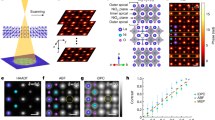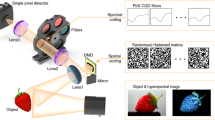Abstract
THE existence of two types of diamond was suggested in 1934 by Robertson, Fox and Martin1. The distinction between these types is based, among other differences, on the location of the absorption cut-off in the ultra-violet. Thus a type I diamond is transparent to radiation down to about 3000 A., whereas in a type II diamond this limit is extended to 2250 A. In diamond investigations the term ‘absorption cut-off’ has been used very frequently and conclusions have been drawn without taking the thickness of the specimens used for experiment into account. The seriousness of this omission is evident in this communication, where some of the results of absorption measurements on thin diamond plates are given.
This is a preview of subscription content, access via your institution
Access options
Subscribe to this journal
Receive 51 print issues and online access
$199.00 per year
only $3.90 per issue
Buy this article
- Purchase on Springer Link
- Instant access to full article PDF
Prices may be subject to local taxes which are calculated during checkout
Similar content being viewed by others
References
Robertson, R., Fox, J. J., and Martin, A. E., Phil. Trans. Roy. Soc., A, 232, 463 (1934).
Raman, C. V., Proc. Ind. Acad. Sci., A, 19, 199 (1944).
Clark, C. D., Ditchburn, R. W., and Dyer, H. B., Proc. Roy. Soc., A, 234, 363 (1956).
Herman, F., Phys. Rev., 88, 1210 (1952).
Author information
Authors and Affiliations
Rights and permissions
About this article
Cite this article
CUSTERS, J., RAAL, F. Fundamental Absorption Edge of Diamond. Nature 179, 268–269 (1957). https://doi.org/10.1038/179268a0
Issue Date:
DOI: https://doi.org/10.1038/179268a0
Comments
By submitting a comment you agree to abide by our Terms and Community Guidelines. If you find something abusive or that does not comply with our terms or guidelines please flag it as inappropriate.



